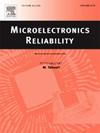一种集成电路切边的方法,重点是切边码的分离
IF 1.9
4区 工程技术
Q3 ENGINEERING, ELECTRICAL & ELECTRONIC
引用次数: 0
摘要
在高级工艺中,加入微调电路可以有效提高高端芯片的良率。然而,传统方法中裁剪参数与裁剪码之间的映射关系往往是分割的、不连续的。本文提出了一种将切边码分为计算切边码和应用切边码的方法。该方法通过重构切边参数与计算切边码、计算切边码与应用切边码之间的映射关系,实现了切边参数与计算切边码之间的线性映射关系、计算切边码与应用切边码之间的逻辑映射关系。该方法有效地减少了裁剪迭代次数和裁剪时间,从而提高了裁剪效率。设计了两种不同的基于硬件和基于软件的实现来验证其可行性。实验结果表明,两种优化算法的修剪时间平均分别缩短44.97%和40.00%,充分验证了所提方法的有效性。本文章由计算机程序翻译,如有差异,请以英文原文为准。
A method for integrated circuit trimming focused on separation of trim codes
In advanced processes, the addition of trimming circuits can effectively improve the yield of high-end chips. However, the mapping relationship between trimming parameters and trim codes in traditional methods is often segmented and discontinuous. This paper proposes a method that separates the trim codes into computational trim codes and applied trim codes. By reconstructing the mapping relationships between trimming parameters and computational trim codes, as well as between computational trim codes and applied trim codes, the proposed method achieves a linear mapping relationship between trimming parameters and computational trim codes, and a logical relationship between computational trim codes and applied trim codes. This novel method effectively reduces the number of trimming iterations and trimming time, thereby improving trimming efficiency. Two different hardware and software-based implementations have been designed to validate its feasibility. Experiments using two optimization algorithms demonstrate that trimming time can be reduced by an average of 44.97% and 40.00%, respectively, fully validating the effectiveness of the proposed method.
求助全文
通过发布文献求助,成功后即可免费获取论文全文。
去求助
来源期刊

Microelectronics Reliability
工程技术-工程:电子与电气
CiteScore
3.30
自引率
12.50%
发文量
342
审稿时长
68 days
期刊介绍:
Microelectronics Reliability, is dedicated to disseminating the latest research results and related information on the reliability of microelectronic devices, circuits and systems, from materials, process and manufacturing, to design, testing and operation. The coverage of the journal includes the following topics: measurement, understanding and analysis; evaluation and prediction; modelling and simulation; methodologies and mitigation. Papers which combine reliability with other important areas of microelectronics engineering, such as design, fabrication, integration, testing, and field operation will also be welcome, and practical papers reporting case studies in the field and specific application domains are particularly encouraged.
Most accepted papers will be published as Research Papers, describing significant advances and completed work. Papers reviewing important developing topics of general interest may be accepted for publication as Review Papers. Urgent communications of a more preliminary nature and short reports on completed practical work of current interest may be considered for publication as Research Notes. All contributions are subject to peer review by leading experts in the field.
 求助内容:
求助内容: 应助结果提醒方式:
应助结果提醒方式:


